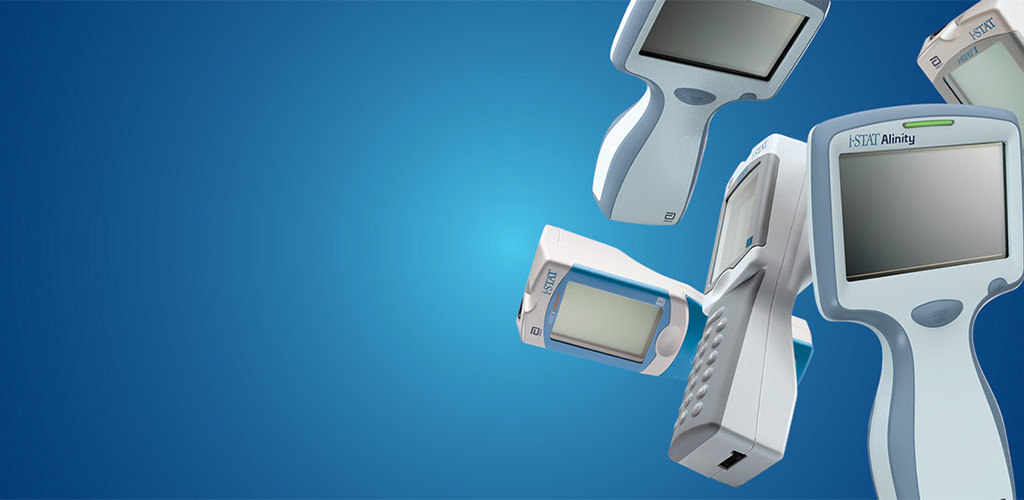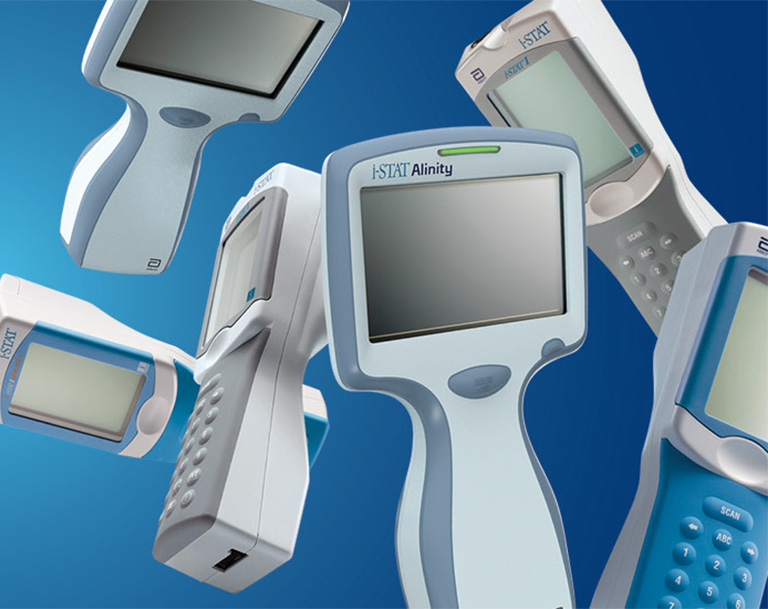Global Point of Care
urgent care centers play an increasing role in the healthcare landscape
As the trend in care moves away from traditional settings, Abbott’s solutions continue to support informed treatment decisions wherever they take place.
In today's fast-paced world, the trend toward same-day care is rising. A convenient and desired approach to care can benefit patients and providers alike. Abbott's life-changing point-of-care testing technology meets the varied needs of urgent care facilities. Having diagnostic test results available during a patient's visit enables care givers to make rapid treatment decisions for a range of common presentations:
- Abdominal pain
- Coughs and colds
- Ear and throat infections
- Vomiting and diarrhea
- Chest pains






URGENT CARE CENTERS PLAY AN INCREASING ROLE IN THE HEALTHCARE LANDSCAPE
As the trend in care moves away from traditional settings, Abbott’s solutions continue to support informed treatment decisions wherever they take place.
In today's fast-paced world, the trend toward same-day care is rising. A convenient and desired approach to care can benefit patients and providers alike. Abbott's life-changing point-of-care testing technology meets the varied needs of urgent care facilities. Having diagnostic test results available during a patient's visit enables care givers to make rapid treatment decisions for a range of common presentations:
- Abdominal pain
- Coughs and colds
- Ear and throat infections
- Vomiting and diarrhea
- Chest pains
Key i‑STAT cartridges
i-STAT System portable, handheld analyzers allow care teams to remain withthe patient during testing. Test cartridges are available for various diagnostic needs, such as blood chemistry, blood gas, cardiac markers and and pregnancy. Select cartridge to learn more.
i-STAT System portable, handheld analyzers allow care teams to remain withthe patient during testing. Test cartridges are available for various diagnostic needs, such as blood chemistry, blood gas, cardiac markers and and pregnancy. Select cartridge to learn more.
FAST, ACCURATE, ON-SITE DIAGNOSTIC TESTING WHERE AND WHEN IT'S NEEDED



Focus on the United Kingdom
i-STAT can help UTCs Comply with NHS Guidelines
In the UK, National Health Service UTC Diagnostic Standards1 recommend that all UTCs have access to:
- Swabs, pregnancy tests, urine dipstick and culture
- Near-patient blood testing, such as glucose, hemoglobin, D-dimer and electrolytes
- Electrocardiograms (ECG)
- Near-patient troponin testing (some centers)
These guidlines also recommend that UTCs, particularly those not co-located with A & E, have access to:
- Bedside diagnostics
- X-ray facilities
Where facilities are not available on-site, the NHS advises that clear access protocols should be in place.
Text in bold indicates NHS recommendations supported by i-STAT Point-of-Care testing. i-STAT System does not include a D-dimer test.
References
- NHS Urgent Treatment Centres Principals and Standards - July 2017 https://www.england.nhs.uk/wp-content/uploads/2017/07/urgent-treatment-centres%E2%80%93principles-standards.pdf - accessed June 2022.
fast, accurate, on-site diagnostic testing where and when it's needed



Focus on the United Kingdom
i-STAT can help UTCs Comply with NHS Guidelines
In the UK, National Health Service UTC Diagnostic Standards1 recommend that all UTCs have access to:
- Swabs, pregnancy tests, urine dipstick and culture
- Near-patient blood testing, such as glucose, hemoglobin, D-dimer and electrolytes
- Electrocardiograms (ECG)
- Near-patient troponin testing (some centers)
These guidlines also recommend that UTCs, particularly those not co-located with A & E, have access to:
- Bedside diagnostics
- X-ray facilities
Where facilities are not available on-site, the NHS advises that clear access protocols should be in place.
Text in bold indicates NHS recommendations supported by i-STAT Point-of-Care testing. i-STAT System does not include a D-dimer test.
References
- NHS Urgent Treatment Centres Principles and Standards - July 2017 https://www.england.nhs.uk/wp-content/uploads/2017/07/urgent-treatment-centres%E2%80%93principles-standards.pdf - accessed June 2022.








